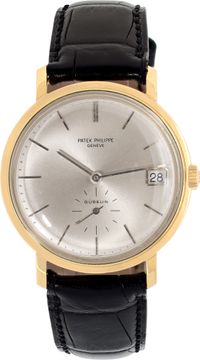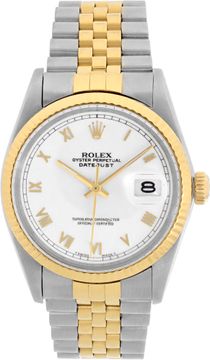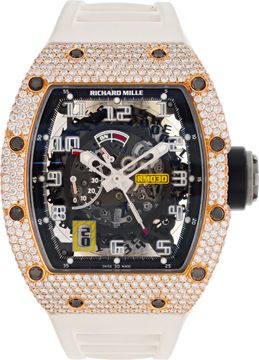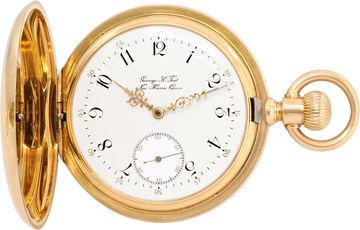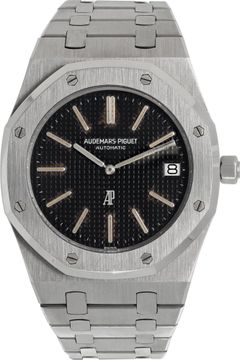Back to Basics: What is a Chronograph Watch?

Among watch enthusiasts, you’d be hardpressed to find someone who doesn’t own at least one chronograph. While it could be argued that today’s digital world quells the need for a mechanical stopwatch, that certainly hasn’t slowed down the popularity the chronograph. There’s something to be said about the appeal of a sporty luxury chronograph timepiece. But what is a chronograph watch and how does it work? We’re here to answer that very question. Join us for this week’s Back to Basics as we dig deep into the mechanics of a chronograph watch and offer some superb examples of some top chronograph watches available at Gray & Sons.
How Does a Chronograph Watch Work?
French watchmaker Louis Moinet is credited with inventing the chronograph mechanism in 1815. A chronograph watch is essentially a stopwatch that includes pushers–typically two, but there are some with one or three pushers–on the watch case to start, stop, and reset a chronograph hand on the dial. Oftentimes, modern chronographs will also have subdials on the main dial to record how many minutes and/or hours have elapsed since the chronograph hand started. So a standard chronograph will have a minute counter subdial, an hour counter subdial, and most often, a running seconds subdial also since the main dial has a chronograph hand rather than a typical seconds hand.

Chronographs frequently include scales on the watch too, such as tachymeter scales (used to calculate speed of a moving object like a car based on travel time), telemeter scales (used to measure the distance to an event that can be both seen and heard using the speed of sound), and a pulsometer (used to measure pulse per minute).
In addition to standard chronograph watches, there are plenty of more complex versions such as the “rattrapante,” or split-seconds chronograph that can actually time two different events independently. There’s also the flyback chronograph, which allows for the resetting of the chronograph hand without the need to stop it first.

While watchmakers often position certain chronographs as motorsports inspired, aviation inspired, or military inspired, many chronograph owners don’t ever use the function on their watch. But that’s okay because it’s the look rather than the mechanics of the timepiece that’s so appealing today. The combination of the pushers, registers on the dial, and scale come together to create the iconic chronograph style that’s hard to resist. And with that, let’s have a look at some fantastic examples of chronograph watches.
The Zenith El Primero
Invented by Zenith and perhaps the most famous chronograph caliber of all time, the automatic Zenith El Primero movement has in fact been at the heart of many chronograph watches outside of the Zenith brand, including at one time the Rolex Daytona.

Introduced in 1969, the El Primero lays claim to being the world’s first automatic chronograph movement, however, this is disputed by the likes of Seiko and Heuer. Regardless, the El Primero chronograph movement stands out for the use of a column wheel, for its 36,000 beats per hour frequency, 50-hour power reserve, and sublime accuracy and durability.
The Rolex Daytona
The highly popular Rolex Daytona is a must-have for many watch enthusiasts. In fact, the most expensive wristwatch ever sold at auction is a $17.8 million Rolex Daytona that once belonged to Paul Newman. That particular Rolex Daytona, however, is a manual-wound Daytona, which is how Rolex’s signature chronograph began. But in 1988, the manual Daytona was replaced with the modern automatic Daytona, powered by a modified El Primero movement.

Finally, in 2000, Rolex unveiled the Daytona with an in-house chronograph movement–the Caliber 4130. Today’s Rolex Daytona watches run on this now-famous chronograph caliber and the Daytona’s iconic status continues to strengthen. This was particularly evident in 2016 when Rolex presented the first stainless steel Daytona with a ceramic bezel. With its 40mm stainless steel case, matching stainless steel Oyster bracelet, black ceramic bezel, and a choice of a black dial or white dial, the current demand for the Rolex ref. 116500LN far exceeds supply with years-long waitlists at boutiques everywhere.
The Omega Speedmaster
Although the Speedmaster first came onto the scene in 1957, it was 1969 that changed everything for Omega’s signature chronograph. That was the year that the Omega Speedmaster Professional became the first watch to land on the moon on Buzz Aldrin’s wrist. Aptly named the Moonwatch, that Speedmaster was a manual-wound chronograph, built in stainless steel, equipped with a black bezel with a tachymeter scale, and sported a black dial protected by a hesalite crystal.

Since then, Omega has released countless versions of the Moonwatch, some retaining those design hallmarks some not. Also, the Speedmaster remains as Omega’s main chronograph collection with a multitude of different models offering a choice of automatic, manual, and quartz movements in a range of sizes, materials, and additional functionalities. Furthermore, far from just celebrating its connection to space, there are plenty of Speedmaster chronographs associated with other activities such as motorsports, Olympics, golf, and others.
While we touched upon some of our favorite chronograph watches here, there are almost infinite options when it comes to picking the perfect luxury chronograph. Browse our immense collection of fine chronograph watches to find that one that suits you. And stay tuned for next week’s Back to Basics series where delve into the diver’s watch.
Celebrate Spring with Floral Jewelry and Watches
NEXT ARTICLE
A 13.04 Carat Royal Blue Ceylon Sapphire That Will Amaze You
